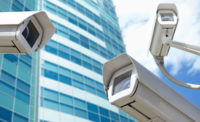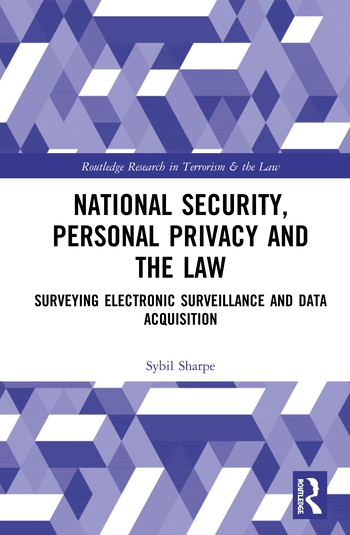Using Security Convergence to Enable the Enterprise
Enterprises realize tremendous benefits from this convergence as well as some serious downsides, but the trend is irreversible.

We live in a converged world; our personal data and our business data are frequently comingled. Companies have a BYOD policy that permits you to use your personal device on a company network. Frequently, there is little distinction between work time and personal time, and employees are permitted to multi-task in business environments to improve productivity and quality of life. We use our phones and laptops as our personal information vault to conduct our banking transactions, serve as ID cards, boarding passes and virtually anything that requires electronic authorization. Enterprises realize tremendous benefits from this convergence as well as some serious downsides, but the trend is irreversible.
The security industry, on the other hand, has come kicking and screaming into the converged world. Physical security and cyber security professionals interact when they have to but typically the worlds remain apart. However, the data, the electrons and virtually all their respective systems share exactly the same networks, without the benefit of correlating the information flows to provide better surveillance, domain awareness and security for the enterprise. For example, we all use access control systems in some form or another – receptionists at a desk, security officers at a door, card readers, biometrics, or all of the above. The original approach: a dumb panel and a single PC basically decided who can get in a door. It worked, but was unintelligent – it could not recognize anomalies nor could it provide real domain awareness. In today’s security environment, enterprise security leaders need more than to control who comes and goes, they need to know who is attempting or accessing areas that they may not have legitimate reason to do so. They need to correlate an employee’s access to a building in one geographic location with the same employee’s sign-on to their computer from another geographic location to detect a potential unauthorized entry.
As technology evolved, systems got a little smarter and distributed. Software had to be complex and robust, to download data to each panel, keep track of which panels had what data and it required an expensive microcomputer (a control panel) near each door or group of doors. Some effectiveness was achieved, but costs increased and the ability to provide better domain awareness still lagged behind. Physical security and IT (cyber) security were still in separate worlds and vulnerabilities were introduced because hackers determined that these proprietary microcomputers were not really under the control of the IT department, and that they were vulnerable and easy to penetrate.
While the traditional security world remained relatively static, the Information Technology world accelerated change at an incredible pace to meet the growing demands of the business. IT departments spent millions of dollars building fast, dependable and quite secure networks. They were actively protecting their networks from cyber attacks. IT-centric logical security experts asked a simple question: Why can’t we use the existing, hyper-secure and constantly improving IT network to protect and serve the security departments? Networks are “up” and online 99+ percent of the time. The concept of remote decision making, while necessary in 2000, is not necessary today.
Let’s use the significant security and power of existing IT networks, let it all be managed by IT and let security get back to their primary job, deciding who should get in and responding to those who should not. Let’s eliminate those very expensive, and now unnecessary, microcomputers at each door, and let the computer servers protected behind firewalls and locked in data centers, do the hard work. The IT department will have one less vulnerability to worry about. What are the benefits?
- Significantly lower costs. Use a small “simple interface” to translate Wiegand readers, door contacts, and electric strikes into IP signals. No microcomputer near the door, no control panel.
- Use the existing servers to make the decisions.
- Use the existing IT infrastructure (switches, cables, UPS systems) to keep the system running.
- Use existing IT redundancy and backup to protect in case of failures.
- Let the IT department protect valuable data and keep out cyber-intruders.
- Merge physical access (doors) and logical access (computers) into a single system.
- Let security worry about the “who, when and where.” Let IT handle moving the data.
- Take away remote databases not managed by IT, and reduce the ability of hackers to penetrate the access system who use it as a gateway to the rest of the IT system.
- Save significant hardware money to spend on other security measures.
The world is changing and the opportunities to leverage technologies to know more about our enterprise, our employees, visitors and vendors to create a secure environment has never been greater, nor has the need for better security been more present. Enterprise security executives need to rethink the old systems architecture and become partners with their IT support system. Let IT handle the data. Let security protect the employees and company’s assets. Spend your budget wisely and have some left over for those other important projects.
About the Authors:
Bob Liscouski is CEO and co-founder of Axio Global LLC, an innovative enterprise cyber risk management firm focused on protecting and preserving the value of companies that are essential to our global economy by providing complete cyber risk mitigation and transfer solutions. He is the former Assistant Secretary for Infrastructure Protection for DHS. Dennis Raefield is COO of Viscount Systems. He is a member of ASIS, SIA, ESA, ISIO, CAA, and CSAA.
Looking for a reprint of this article?
From high-res PDFs to custom plaques, order your copy today!









